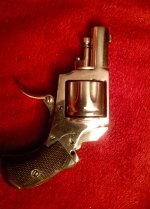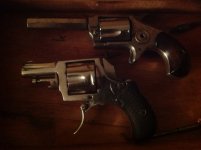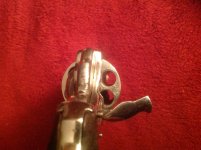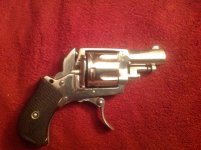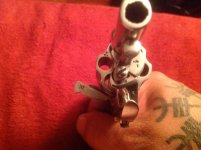Jim, it's possible that we're being overly cautious. I've read that a German company named Rickert continued manufacturing "bulldog-type" revolvers into the 1930's, and I wouldn't be surprised if Belgian manufacturers had done the same.
My Belgian .32 has a proof (crown over R) on the frame which was introduced in 1894, according to this website -
http://damascus-barrels.com/Belgian_All_Proofmarks.html
Unfortunately, I don't really know when it was manufactured or whether the engineers designed it for smokeless powder. It does not bear a "lion" nitro proof. Would you recommend shooting factory smokeless loads in it?
My Belgian .32 has a proof (crown over R) on the frame which was introduced in 1894, according to this website -
http://damascus-barrels.com/Belgian_All_Proofmarks.html
Unfortunately, I don't really know when it was manufactured or whether the engineers designed it for smokeless powder. It does not bear a "lion" nitro proof. Would you recommend shooting factory smokeless loads in it?

